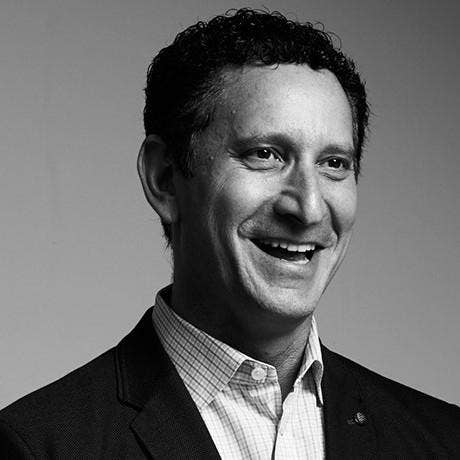InterVision’s New CEO On M&A, Competition And Security
‘I think the timing was right,’ InterVision CEO Jonathan Lerner says of his new position. ‘How will this be the next level of growth? How do we pour jet fuel on that opportunity of the $300 billion and change Infrastructure-as-a-Service addressable market and have double-digit growth for the next three to five years?’

Jonathan Lerner took on the CEO at InterVision this month and has big plans for M&A, customer acquisition and employee retention.
Before coming to the Santa Clara, Calif.-based solution provider, Lerner served as the president of TTEC Digital among other positions at a number of companies and comes with more than a decade of experience.
“What I’ve done puts me in a good position to help the team excel and succeed,” he told CRN. “We’re not an OEM. We do have great IP and we’ll continue to look at how do we blend our own solutions that we’re developing plus IP that we’re acquiring through these strategic acquisitions.”
In an exclusive interview with CRN, Lerner discusses his vision for the company, why the market is rife with opportunity and how he plans to grow InterVision’s customer base.

What attracted you to InterVision?
InterVision is in a great market at the right time, with a lot of focus on midmarket in certain areas of key industries. There’s a dynamic going on that’s putting an emphasis on managed service providers and professional services to help lead companies. It’s helping to really digest how the dynamics of the market are changing from owning to running from recognizing how decisions are being made and how do we simplify, modernize and scale business.
The company’s background and focus in regulated industries and public sector are some of the most dynamic, especially in the midmarket. There’s a ton of opportunity for us to lead in many cases.
I think the timing was right. How will this be the next level of growth? How do we pour jet fuel on that opportunity of the $300 billion and change Infrastructure-as-a-Service addressable market and have double-digit growth for the next three to five years?

What is one area you want to focus on in your new role?
We have been experts in products, in solutions, in being the voice when a customer has said, ‘I have an identified need and I need an expert.’ What I bring, and the focus is, to get way out front of that. To get ahead of that identified need to how do we build the case for change around customer strategy. It’s a bit of a shifting dynamic around what’s our secret sauce around solving customer issues.
This is where IT and business have come together. It really takes a different perspective and an additional set of eyes to turn from being very expert around solutions and being very expert around customers. I bring that. I would put my hat on and say, ‘Here’s my flag, here’s what I’ve been able to do in my past—it’s really lead with the customer [from the] outside in. That’s how you get to that next level of growth, really focus where you want to bring expertise and lead with insight around customer change for business outcome.
We’re using IT to drive business outcomes. We don’t just serve IT. IT doesn’t serve IT. We all serve business and it’s incumbent upon us to make sure we know the customer strategy better than our competition.

With hybrid work here to stay, how will that play a role when it comes to managing customers as it relates to cloud-based solutions and security?
The pandemic contributed to how we look at the experience economy. It’s been a shift around embracing people and solutions that drive people engagement, employee engagement and the patient experience. There’s a whole dynamic around how are we using this moment in time of tremendous challenge to really embrace change. I think it’s driving everything from budgets to monetization to how are you actually getting a jump to simplicity.
You don’t need elegant solutions to drive and start change, but you need simple outcome-based solutions to maintain it and scale in an organization. What we’re doing is we’re trying to make sure that we’re addressing the people side of the equation, that we’re bringing our people out front and trying to position our value proposition and their case for change around the experiences we’re going to deliver to the business.
How are we going to influence patient experience, citizen experience, customer experience, consumer and employee experience? The dynamic has shifted and we’re poised to seize on that with some of the ways that we’re addressing that shift from where do we want to go and how do we get there with less risk.
What are your six- to 12-month goals for InterVision?
It really falls into two buckets. We’re an acquisitive company, we’ll probably do two to three acquisitions over the next 24 months. That’ll drive double-digit growth inorganically. To all of our stakeholders it will drive organic growth in double digits as well. It shouldn’t be a stretch as only about 25 percent of the market has seized this movement to the cloud.
The window is in the next two years. It’s a matter of how aggressively and how quickly we move. It’s in those two buckets: We’re going to drive double-digit organic growth and we’re going to drive double-digit inorganic growth and consolidate and grow.

What are some challenges you foresee happening and how do you think you would handle them?
The market is a chock-full of paths with pitfalls on either side. While being a strategic service provider is a little unique, we look a little different than an old-world VAR that’s trying to seize and sound like a service provider. Yet we were not encumbered by being brand new out of the chute as a born-in-the-cloud.
While there’s the competitive pressure, there are elements of the unknown, just like the pandemic. There’s obviously a lot of opportunity for folks to try to attract our talent away. What really ties our people and ties our customers is our commitment to building customers for life.
We feel strongly that it’s the best ecosystem that wins, it’s not just the best value proposition or the best product. How do we address competition in that midmarket space, we do it by leading with success. We’re a 25-year-old company, we’ve been through that change, we’ve managed to navigate it. We’re staring at competition all over the place where there’s a lot of market factors that could disrupt, but I really like what we’ve done with the platform. We‘ve been able to build the foundation we built over 25 years.

Where are you placing your bets in 2022 in terms of market trends and growth for InterVision?
We‘re making big investments; 35 percent of our top line is delivered through managed services and professional services. That represents about 60 percent of recurring revenue. We’re trending toward what our customers are looking for as how do we simplify and modernize data centers, how do we move to experience and how do we manage and help clients stare down digital transformation as an enabler for their business strategy.
It’s all about leading with knowing the customer’s strategy better and attacking it with great solutions that we rally as a team around and bringing forward that expertise, those certifications and that customer and partner commitment. If we do that, then we’ll be ahead of the pack and we’ll earn the trust of the customers.
That’s our big bet, to leverage our install base, to definitely go get a bunch of net-new clients and to lead with experience in those markets.

What is one thing you want to double down on when it comes to acquiring customers?
It’s about the insight you bring and that you lead with. It’s not about asking them what keeps them up at night, it’s about coming with perspective and insight around understanding them better.
We’re going to really be targeted around how we pursue [customers] because we bring a lot to those industries and those customer bases that we serve. We’ll continue to lead with insight, continue to challenge the business and IT perspective around the case for change and show up early enough that we earn the right to bring that perspective early in the conversation. This is all about timing.
We all tout the benefits of working with us for our experience that we bring, but there’s very few that can approach net-new customers saying, ‘I’ve lived the journey. That’s my experience. We’ve done it. We know the pain of change.’
Secondly, we’re willing to invest to help quantify and qualify the case for change. All of that happens before that need for change is really crystallized. If we can tell that story well and we can credibly bring the experience, lead with references, lead with, ‘We’ve done it,’ I think we’ll get our share of opportunities.

There’s a talent shortage in the channel right now. How do you plan on hiring more people for your team?
This is absolutely a battle to attract, to retain, to develop the best talent in the industry. Engineering trumps all. When we talk about perspective and insights around direction, process and solutions, there’s a lot of competition for those, especially in the hyperscaler space. Well-trained folks are a premium for sure.
I think that our people are looking for meaningful interactions, not just transactions, and we satisfy that. We encourage, we train, we engage, we trust and we listen to our people. That gives them the opportunity to influence our road maps, where we’re going and how we deliver it.

What does the conversation with your customers around security look like?
It’s one of our core areas when we talk about our four centers of excellence that we go to market with. It’s not one lever we’re forcing forward. The beauty of how we approach our differentiated value proposition is you’re going to have to deal with all of these. You need to think and sleep well knowing you’re secure, knowing that your resiliency plan and your management infrastructure is cared for, that your cloud and your communication strategy are cared for.
It’s not about excelling in one; you’ve kind of got to address all four. That’s the difference between what we call ourselves as a strategic service provider, or an IT services for business provider, and any one of those in between. We rely on great partners. We have a great group of technology OEMs that we rely on that give us the confidence to recommend and say, ‘Here‘s how we will deliver that.’
What we’re trying to do is take that complexity out and, like Intel used to say, ‘It’s in there.’ We have the security check; we’ve got the resiliency check. We’ve got your path to cloud. We’ve got you covered. What you’re betting on is our experience, our simplicity, our risk and our financial proposition. Lean on our expertise, lean on our insight and we’ll help you sleep well at night.